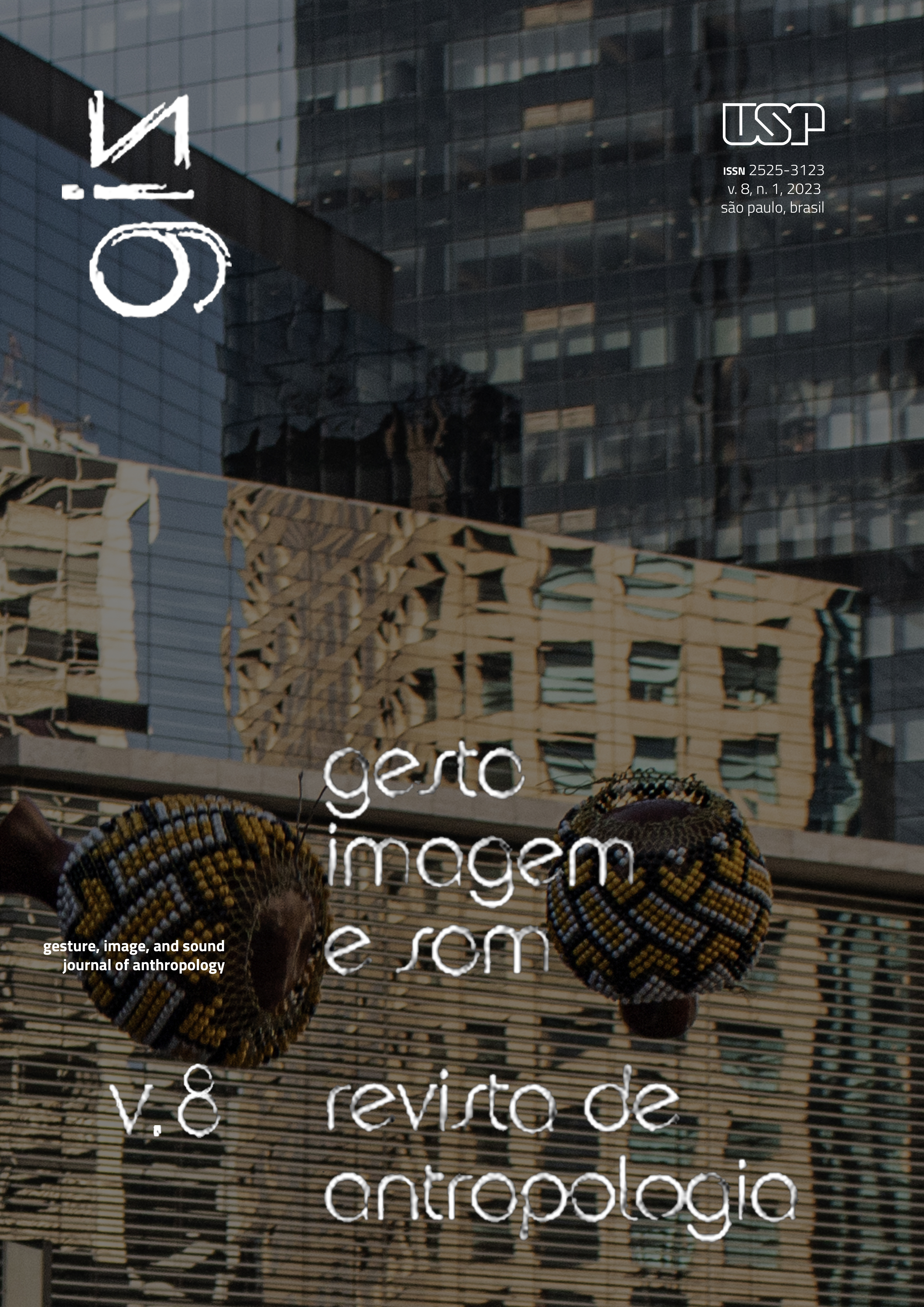Atafona: registro de um mundo em ruínas
DOI:
https://doi.org/10.11606/issn.2525-3123.gis.2023.196896Palavras-chave:
Atafona, Antropoceno, Ruínas, Memória Social, ErosãoResumo
Atafona é uma praia situada no norte do estado do Rio de Janeiro, Brasil. É ali que deságua o rio Paraíba do Sul, depois de percorrer centenas de quilômetros e cruzar três estados federativos. Ao longo do século XX, Atafona constituiu-se como balneário de uma elite regional, que ali ergueu suas casas de veraneio e viveu o lugar, por mais de quatro gerações, como um ambiente de lazer, encontros, festas e sociabilidades diversas. Na segunda metade do século XX, observou-se o início do avanço das águas do mar em direção à área construída de Atafona. O mar avançou e começou a “engolir” as casas, as ruas e as quadras do local. A paisagem transformou-se paulatinamente em uma exposição de ruínas. Este ensaio apresenta imagens das ruínas de Atafona, captadas em momentos distintos do século XXI, para contar um pouco da história do lugar e das transformações da paisagem.
Downloads
Referências
Blasi Cunha, Juliana. 2020. Atafona: sociabilidade e memória em um balneário no Norte do Estado do Rio de Janeiro. Rio de Janeiro: Autografia.
Codeço, Fernando. 2021. Ecofagia: erosão como arte ambiental canibal. Revista Das Questões, vol. 11, no. 1: 247-265.
Eriksen, Thomas Hylland. 2018. Boomtown: runaway globalisation on the Queensland Coast. London: Pluto.
Eriksen, Thomas Hylland e Paulo Mendes. 2022. Introduction: scaling down in order to cool down. In Cooling Down – Local responses to global change, org. Susanna Hoffman, Thomas Hylland Eriksen e Paulo Mendes, 01-24. New York: Berghahn Books.
Haraway, Donna. 2016. Antropoceno, capitaloceno, plantationceno, chtuluceno: fazendo parentes. ClimaCom Cultura Científica: pesquisa, jornalismo e arte, no. 5: 139-146.
Lovelock, James. 1979/1987. Gaia: a new look at life on earth. Oxford: Oxford University Press.
Pádua, José Augusto. 2022. Localizando a história do antropoceno: o caso do Brasil. In Os mil nomes de gaia: do Antropoceno à idade da Terra, org. Déborah Danowski, Eduardo Viveiros de Castro e Rafael Saldanha, 187-217. Rio de Janeiro: Machado Editora.
Ribeiro, Gilberto Pessanha. et al. 2004. Análise espaço-temporal no suporte à avaliação do processo de erosão costeira em Atafona, São João da Barra (RJ). Revista Brasileira de Cartografia, no. 56/02: 129-238.
Simmel, George. 1911/1998. A ruína. In Simmel e a modernidade, Jessé Souza e Berthold Öelze. Brasília: UnB.
Steffen, Will, Paul Crutzen e John McNeill. 2007. The Anthropocene: are humans now overwhelming the great forces of nature? Ambio, vol. 36, no. 8: 614-621.
Tsing, Anna Lowenhaupt. 2019. Viver nas ruínas: paisagens multiespécies no Antropoceno. Brasília: IEB, Mil Folhas.
Turner, Victor. 2005. Betwixt and between: o período liminar nos “ritos de passagem”. In Floresta de Símbolos, Victor Turner, 137-158. Niterói: Eduff.
Valpassos, Carlos Abraão Moura. 2021. As insurreições dos pescadores da lagoa feia – ambiente, conflito e memória social no Norte do Estado do Rio de Janeiro. Rio de Janeiro: Autografia.
Downloads
Publicado
Edição
Seção
Licença
Copyright (c) 2023 Carlos Abraão Moura Valpassos, Juliana Blasi Cunha

Este trabalho está licenciado sob uma licença Creative Commons Attribution-NonCommercial-NoDerivatives 4.0 International License.
Autores que publicam nesta revista concordam com os seguintes termos:
- Autores mantém os direitos autorais e concedem à revista o direito de primeira publicação, com o trabalho simultaneamente licenciado sob a Licença Creative Commons Attribution BY-NC-ND que permite o compartilhamento do trabalho com reconhecimento da autoria e publicação inicial nesta revista para fins não comerciais.
- Autores têm autorização para assumir contratos adicionais separadamente, para distribuição não-exclusiva da versão do trabalho publicada nesta revista (ex.: publicar em repositório institucional ou como capítulo de livro), com reconhecimento de autoria e publicação inicial nesta revista.







